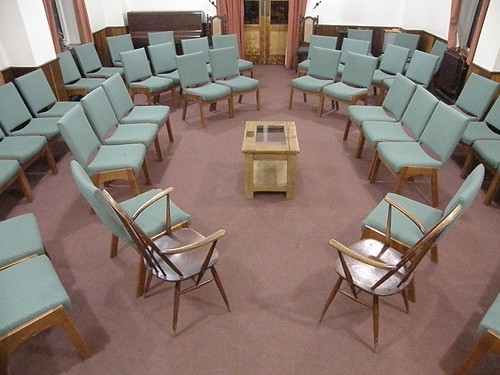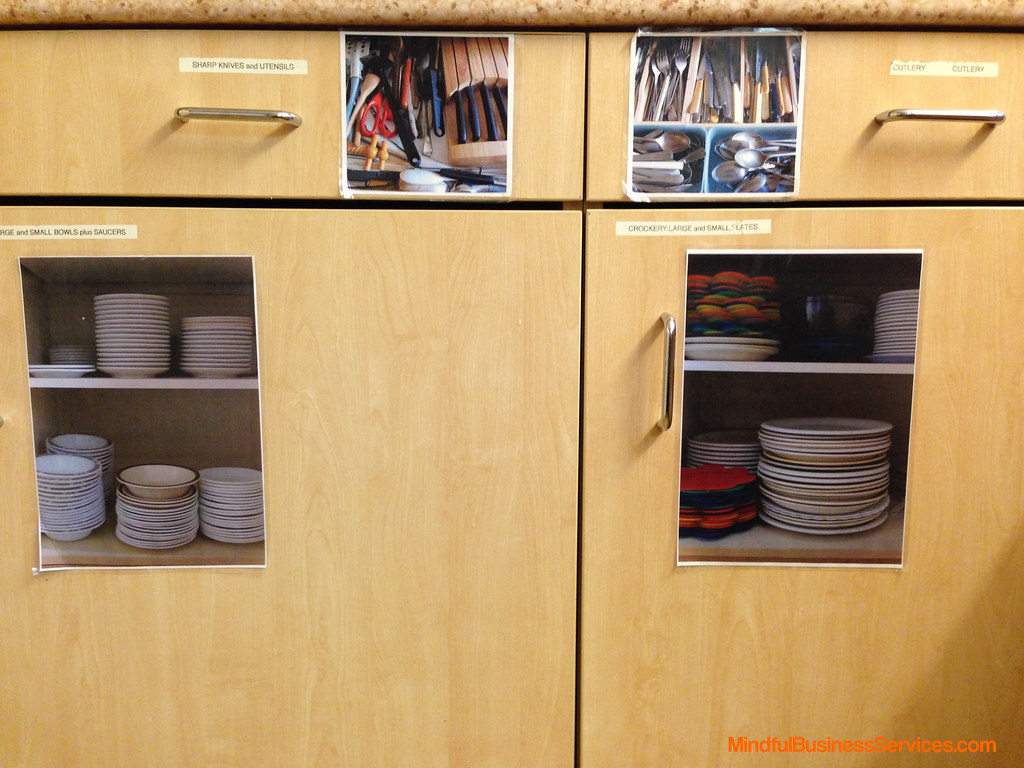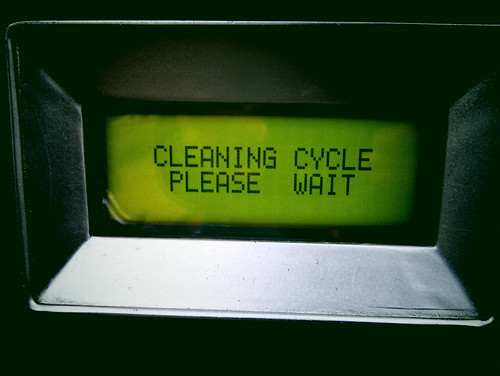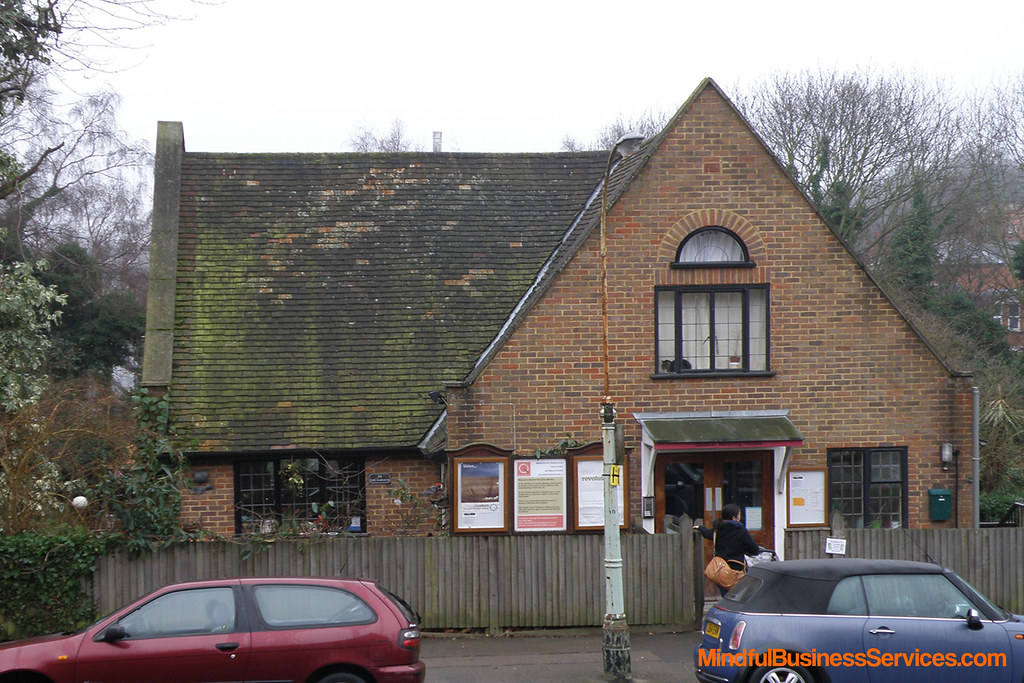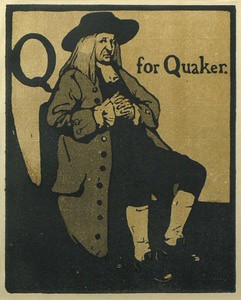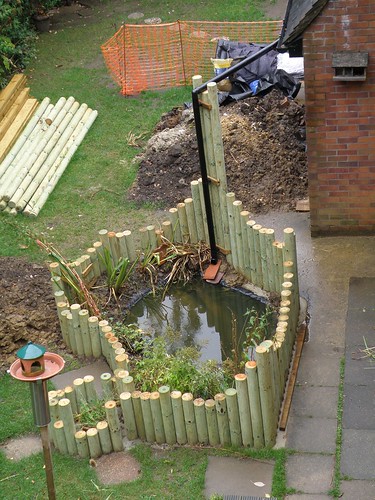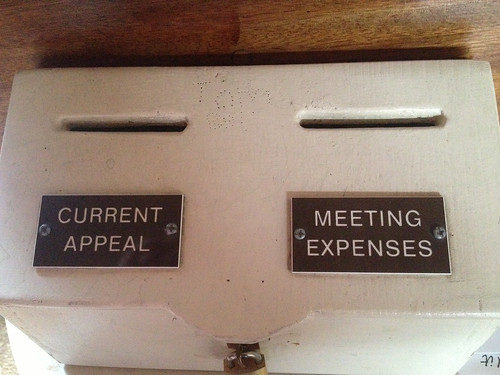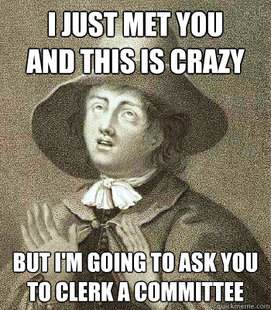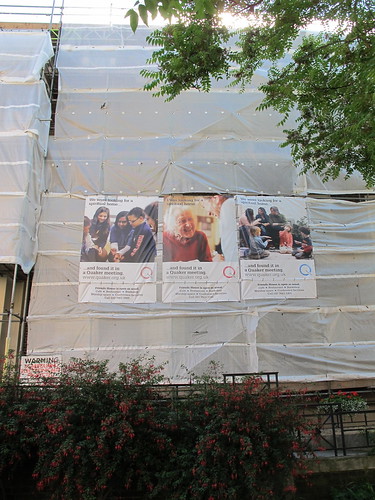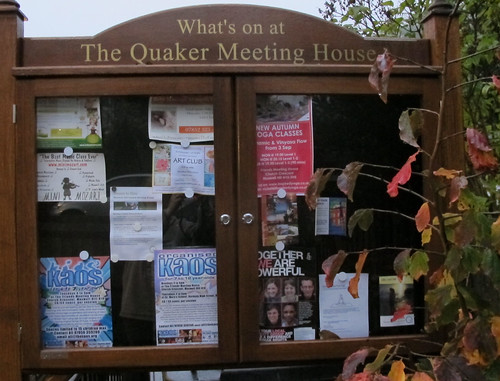This is part of the Quaker Alphabet Project – click here for more information.
H is for History plus Health & Safety
History
In B is for Buildings I mentioned writing down a history of the building to act as a corporate memory for Premises Committee.
There is of course so much relating to the history of the Meeting as a community, than a building…
- Have you asked other members of the meeting to share their memories of the Meeting?
- Created a way to share those memories with newer members and attenders?
- Considered creating a scrapbook archive that can be looked through and added to by each generation of members/attenders/children?
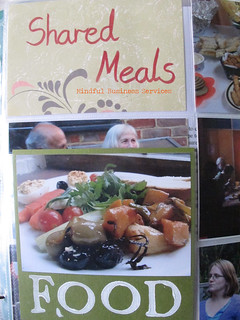 This doesn’t have to be complicated – print out any Life & Service reports to slip into plastic page protectors for example.
This doesn’t have to be complicated – print out any Life & Service reports to slip into plastic page protectors for example.
An easy addition could be just a photograph or two a year – ask around as members may have taken some or be willing to take some.
A brief note of any highlights (births, deaths, membership matters, social events) would be fun to look back on.
Ring binder photo albums can hold a variety of different types – holding A4 paper, photos etc.
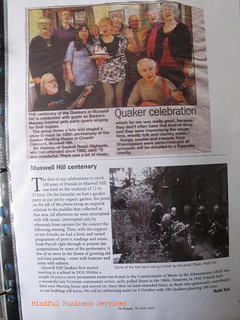 Add in photos of the children’s latest play, a shared meal, or carol singing and you’ll have wonderful material in years to.
Add in photos of the children’s latest play, a shared meal, or carol singing and you’ll have wonderful material in years to.
It may even inspire new activities!
Perhaps you can sense that I am an enthusiastic scrapbooker and memory keeper. Don’t know what that means? See the Life Artistry tab above.
One project I enjoyed at Muswell Hill was taking head shots of current members and attenders as part of a Centenary Scrapbook.
I resized the photos to 3″x4″, printed two to a 6″x4″ photo and cut apart. We used paper and card trimmed to 6″x4″ and created a stack of cards inspired by the recent “I’m a xxxx, an xxxx and a Quaker” posters.
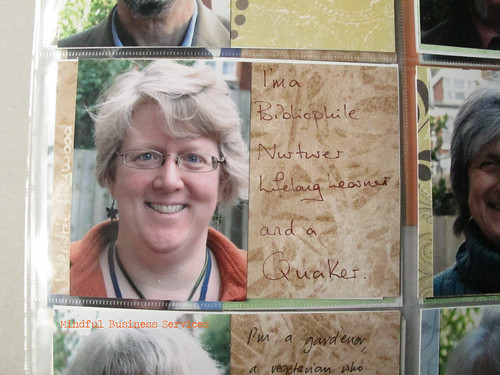 Discovering little titbits about each other creates fellowship and much laughter as the cards are read and shared. These were slipped into plastic pocket page protectors which were put into the Meeting’s scrapbook album.
Discovering little titbits about each other creates fellowship and much laughter as the cards are read and shared. These were slipped into plastic pocket page protectors which were put into the Meeting’s scrapbook album.
Health & Safety
Again as I mentioned in F is for First Aid this is a concern that often slips into the background…
until someone drops hot tea down themselves or is cut whilst chopping veggies for soup…
The basic requirements are that you have a Health & Safety policy that states that your Premises Committee follow all appropriate rules/legislation and that someone has the responsibility for checking that you are.
As well as that policy I’ve presumed you have a first aid box, an accident book and again that someone has the responsibility for checking those and replenishing stocks if necessary. Plus ensuring that basic H&S rules such as fire exits aren’t blocked, assessments of risk have been done etc.
Not sure what those rules are? The Health & Safety Executive website has a handy H&S ABC section.
Two tips I brought back from the very useful Woodbrooke & Quaker Life course, ‘Managing Your Meeting House’ were:
1) Have Health & Safety as a standing agenda item for Premises – even if all you can report is that nothing has been reported.
2) Put copies of your risk assessment on a wall or noticeboard for hirers. Those who need them won’t have to ask if you have one and those who haven’t thought about such things will be reminded.
To browse through all of the posts click on the Quaker A-Z link here or in the side bar.
- What have you done to share the history and traditions of your meeting with new attenders and members?




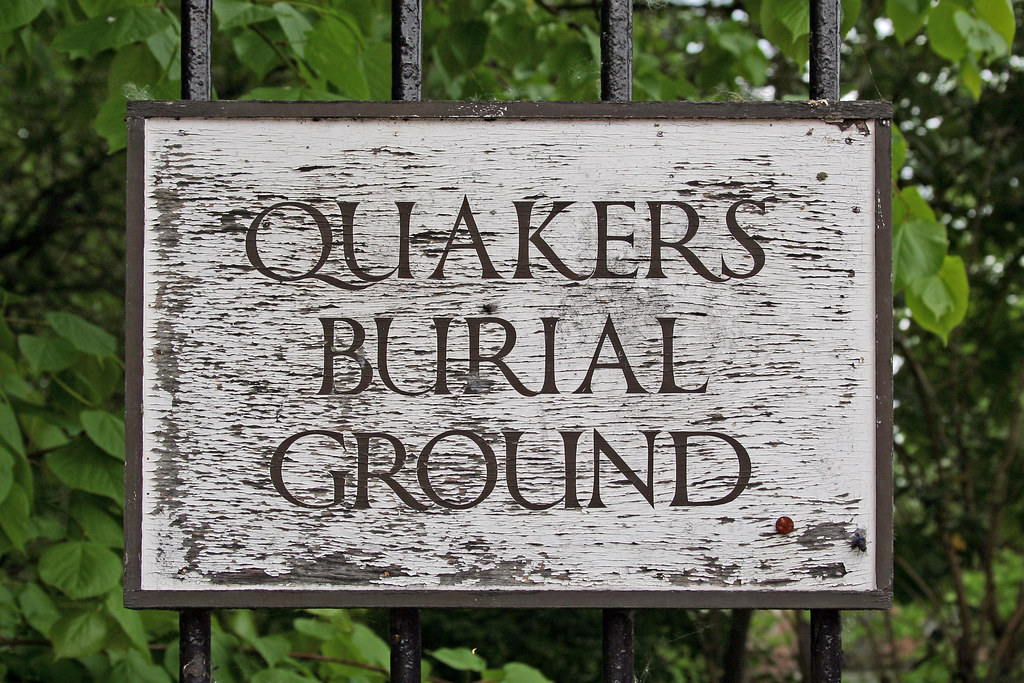
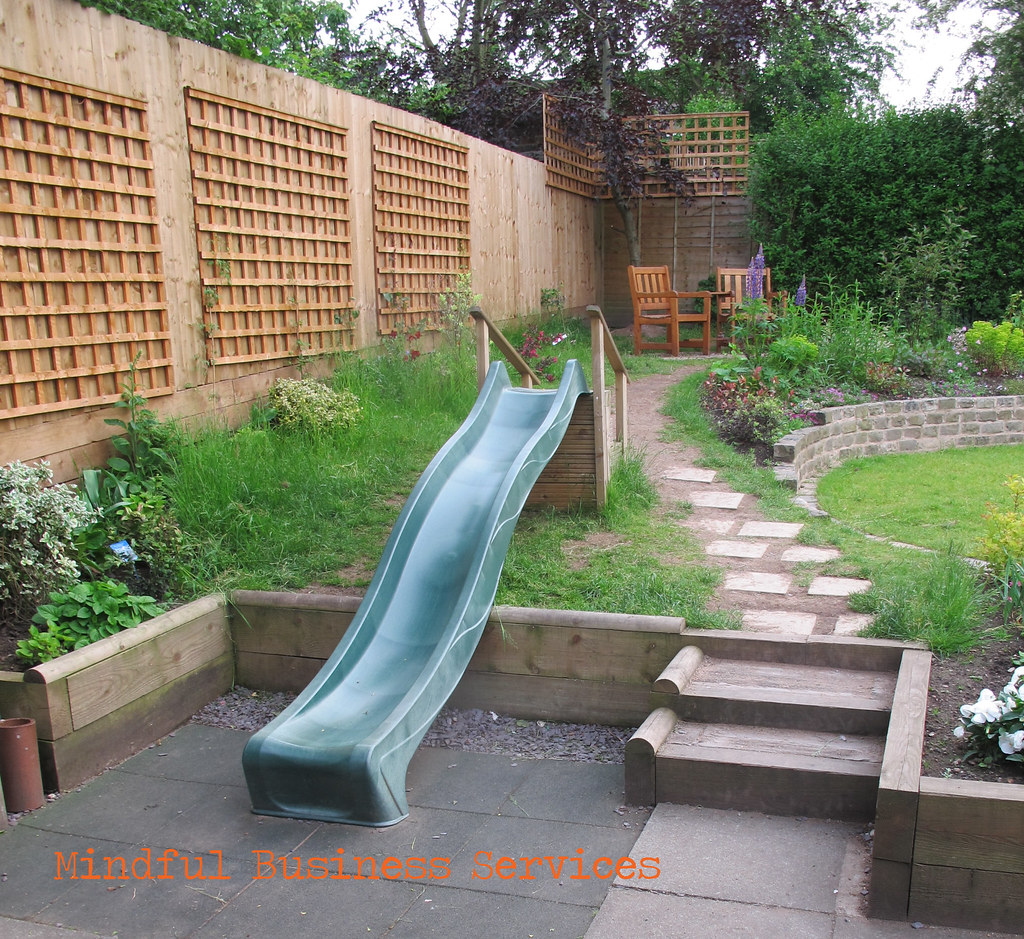
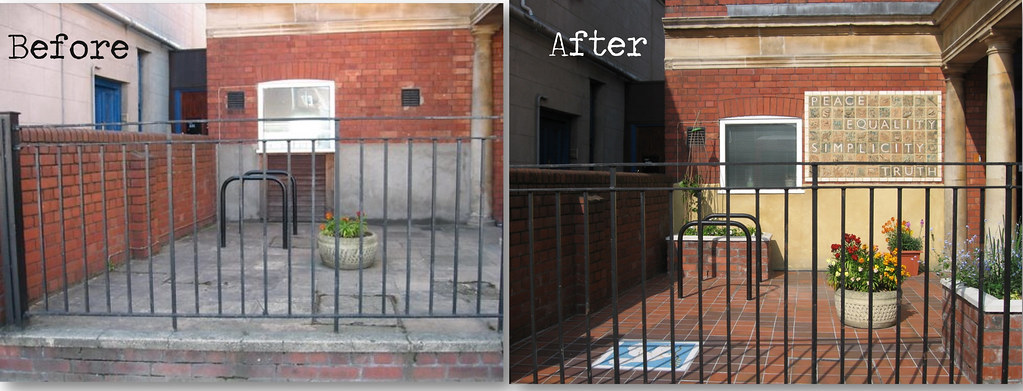
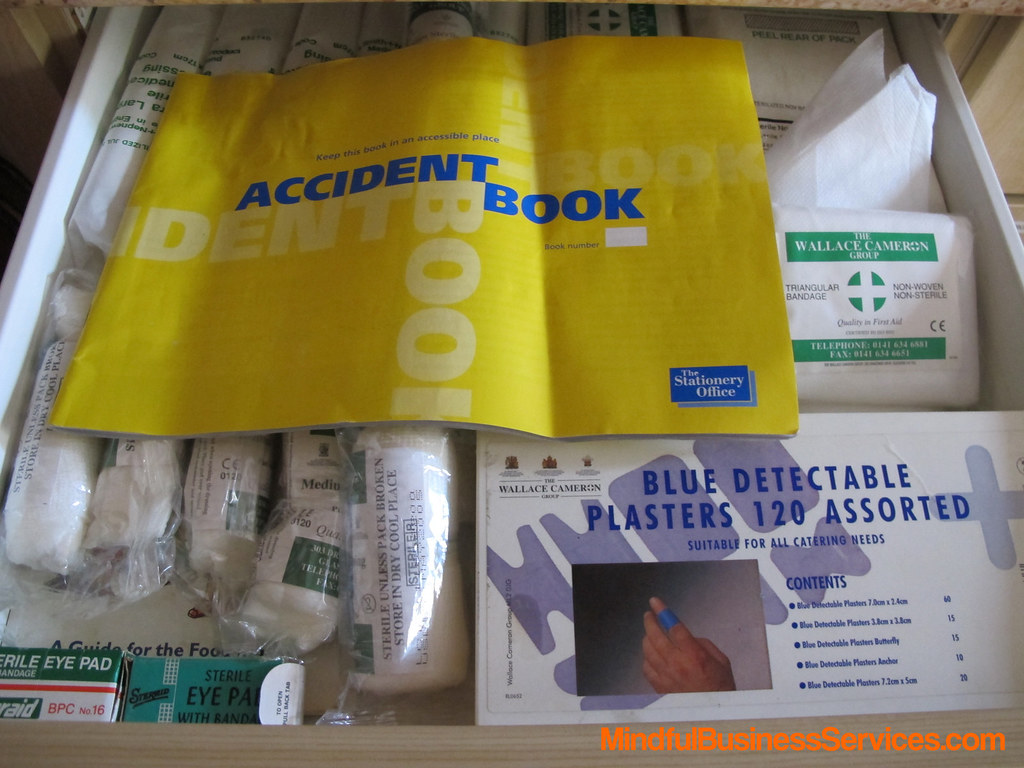
 Fair Trade Fortnight was 24 February – 9 March 2014 this year – did you do anything?
Fair Trade Fortnight was 24 February – 9 March 2014 this year – did you do anything?